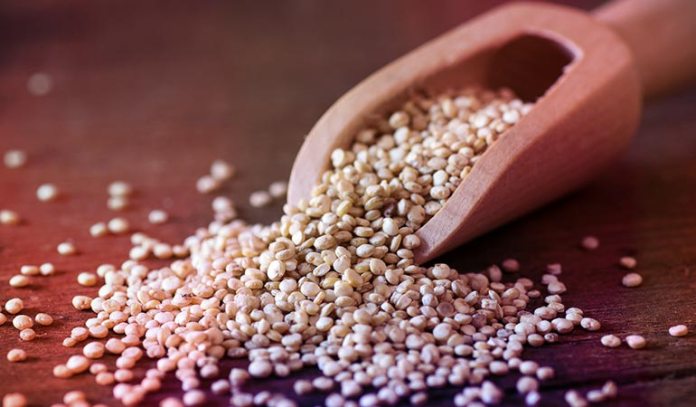Being diagnosed with celiac disease or gluten intolerance can make life difficult because most of our favorite foods contain gluten. While the food industry is slowly beginning to add gluten-free variants, a lot of common foods still have no substitute. If you’re trying to go on a gluten-free diet, don’t be discouraged by the lack of options available. With a little creativity, there are plenty of ingredients in your kitchen that can be used in place of foods containing gluten.
1. Zucchini Spaghetti

There are two things every gluten-free home cook needs in their kitchen: a spiralizer and loads of zucchini. Zucchini noodles are a tasty, gluten-free alternative to regular noodles or spaghetti. They can be eaten raw to add crunch to salads or boiled to develop more of a noodle-like texture. Zucchini is also a lot more nutritious than pasta because it contains important vitamins and minerals. Boil zucchini strands for about 10 minutes and then add it to your sauce for a delicious gluten-free pasta dish.
2. Portobello Hamburger Buns

Who doesn’t love a good, juicy burger? Going on a gluten-free diet often means giving up your favorite cheat-meal since gluten-free burger buns aren’t easily available. Some people wrap their burgers in lettuce, but let’s face it, it’s not the same thing. Lettuce is very thin and doesn’t bulk out a burger like a bun would. A much better alternative is to use large portobello mushrooms instead. They are dense enough to bite into and their natural shape helps prevent stuffing from falling out.
3. Almond Crumbs

Making patties or frying fillets usually involves an egg wash and then a bread crumb coating. Skimping on the bread crumbs means losing all that crunchy texture that makes fried food so delectable. A healthier and gluten-free alternative to breadcrumbs is finely ground almond meal. Almond meal crisps up like breadcrumbs would and adds a completely new flavor dimension. It also contains high amounts of vitamin E, which bread completely lacks.
4. Zucchini Lasagna

Well we told you zucchini would play a large role in your new gluten-free lifestyle. Zucchini makes such a great substitute for pasta because it has a similar texture and can absorb flavors just as well. To make zucchini lasagna, cut the vegetable lengthwise into thin strips with a knife or mandolin. Now use it like you would normally use lasagna sheets.
5. Sweet Potato Crisps

While potatoes in themselves do not contain gluten, packaged chips usually have seasoning that do. To be on the safe side, make your own chips and use sweet potato instead of regular potatoes. Sweet potato is far more nutritious, tasty and crisps up perfectly. Alternatively, you could bake kale or dehydrate apples for more homemade crisps. Remember to use your own spices to season them because commercial seasonings often contain gluten.
6. Cauliflower Pizza Crust

Going gluten-free doesn’t have to mean going pizza-free. The foundation of every pizza is its crust, but unfortunately pizza crusts also have a lot of gluten. A healthier alternative is to make a pizza base using cauliflower. Boil cauliflower for a few minutes until it’s softened and blend it to a smooth puree. Then add some eggs and cheese in it to help it crisp up in the oven. Make a large circle with the puree and bake for ten minutes. Add your favorite toppings to it and then bake for another 15 minutes.
7. Coconut Flour Pastries

Since flour is an essential component of baking, going gluten-free might make it difficult for you to whip up a batch of brownies. However, there are a ton of gluten-free flour alternatives these days. One of the most popular ones is coconut flour, Coconut flour is tasty, healthy and, most importantly, gluten-free. However, coconut flour tends to suck up a lot of moisture so you will need to experiment with your ratios before you perfect it. Other flour alternatives are almond flour, rice flour and packaged gluten-free blends.
8. Quinoa Rice

In any recipe that calls for couscous, try substituting it with quinoa instead. Couscous is a popular Middle Eastern grain that’s actually very healthy, but unfortunately, contains gluten. Quinoa on the other hand might look like a grain but is actually a seed. Because of this, it contains no gluten and is safe to eat if you have gluten intolerance.





